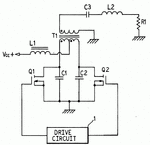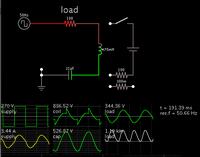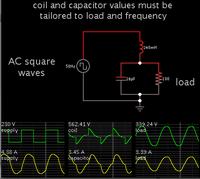gbugh
Member level 5
- Joined
- Mar 15, 2013
- Messages
- 80
- Helped
- 1
- Reputation
- 2
- Reaction score
- 1
- Trophy points
- 1,288
- Location
- Fort Worth, Texas
- Activity points
- 2,236
Most push pull class E topologies I've seen have the output L and C and load R all in series. But here Wong shows the load R across the filter capacitor of the output LC filter:
http://www.eie.polyu.edu.hk/~cktse/pdf-paper/ISCAS05-Wong.pdf
Which way is better and why, with the R (output coupling transformer) in series or with the R across the filter capacitor?
thanks, George
http://www.eie.polyu.edu.hk/~cktse/pdf-paper/ISCAS05-Wong.pdf
Which way is better and why, with the R (output coupling transformer) in series or with the R across the filter capacitor?
thanks, George




